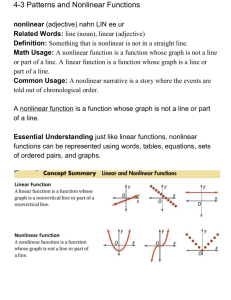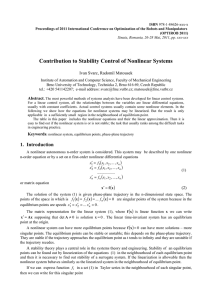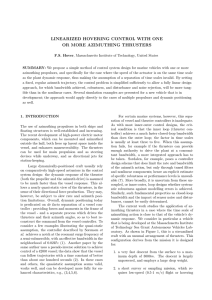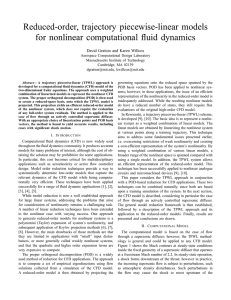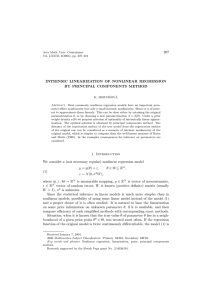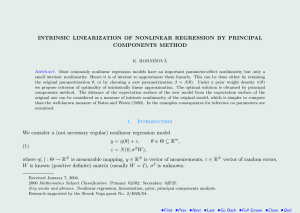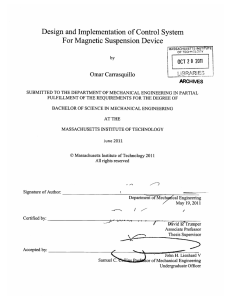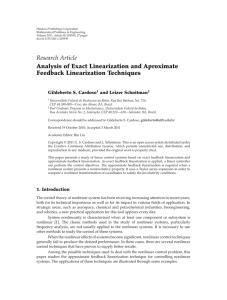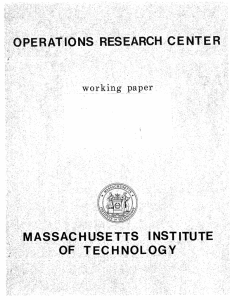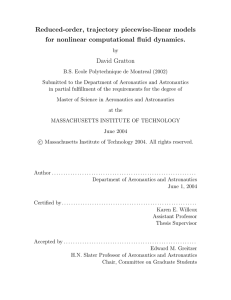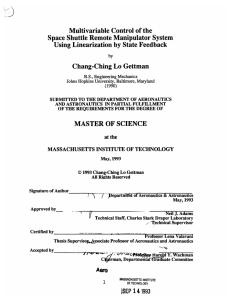Nonlinear Systems
advertisement
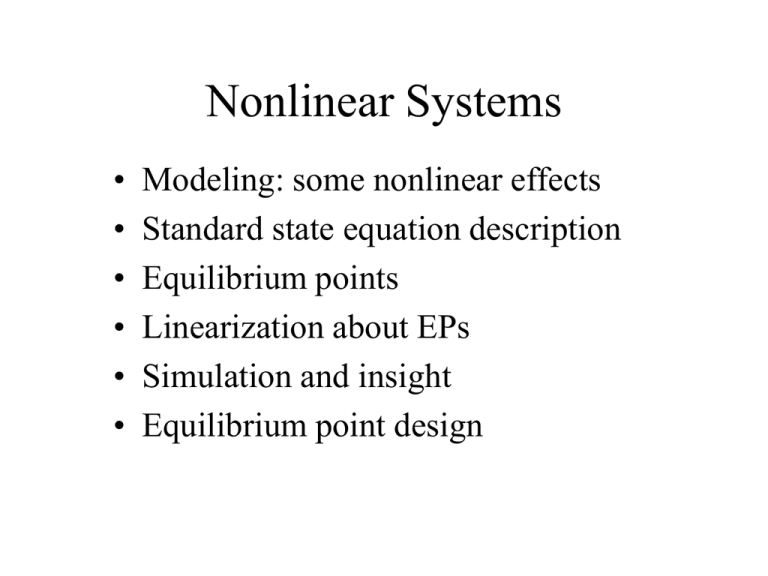
Nonlinear Systems • • • • • • Modeling: some nonlinear effects Standard state equation description Equilibrium points Linearization about EPs Simulation and insight Equilibrium point design Some nonlinear effects • • • • • Aerodynamic drag on a vehicle Rotodynamic pump Nonlinear spring effect Nonlinear geometry Check valve modeling Aerodynamic drag effect Typical aerodynamic drag on a passenger vehicle can be modeled by a drag force, Ra, given by Ra ( / 2) * CD * Af *Vr where ρ is mass density of air, CD is drag factor due to vehicle shape, Af is frontal (projected) area, and Vr is vehicle speed 2 Rotodynamic pump A typical model for the outlet port of a rotodynamic pump is given by P k3 * N k 2 *Q 2 where P is outlet port pressure, N is shaft speed, and Q is outlet port flow. 2 Hardening spring A typical relation for the characteristic of a hardening spring is given by F k1 * k where F is the spring force and δ is the spring deflection from free length. Nonlinear geometry Mass, m L Fmagnetic θ mg (1) mL * Fmag * L cos mg * L sin (2) 2 Examples to illustrate nonlinear methods • • • • Pendulum with magnetic force applied Spring-loaded pendulum Hanging sign problem Print-head mechanism Formulation of standard equations • Identify the state and input vectors X(t) and U(t). • Formulate a set of system equations. • Reduce the equations to the form X (t ) f ( X ,U ) (If this is not possible then a different approach needs to be taken which we will not discuss here.) Equilibrium points • We seek equilibrium points (EPs) under the following conditions: – Assume all inputs are constant, U(t) =Uc. – Assume all derivatives go to zero simultaneously. • The equations become 0 f ( X , U ) • Solve the EP equations for Xep, given Uc. (There may be zero, one or many EPs. Finding them can be a daunting task on occasion. ) Linearization about an EP • To gain insight about the nature of a given EP we can linearize the model about the EP. • We use a Taylor series method, expanding about the EP. • The resulting linearized model can be written as X (t ) A * X B * U See Linearization a la Taylor notes. Simulation for insight • To locate a stable EP in a difficult problem we can sometimes simulate the dynamic response and watch it go to the EP. • Once such an EP has been located we can simulate the behavior in the vicinity of the EP to get a feeling for the local behavior. • It is also possible to numerically approximate the linearized A, B matrices at an EP. See Hanging Sign example and Numerical linearization notes.






